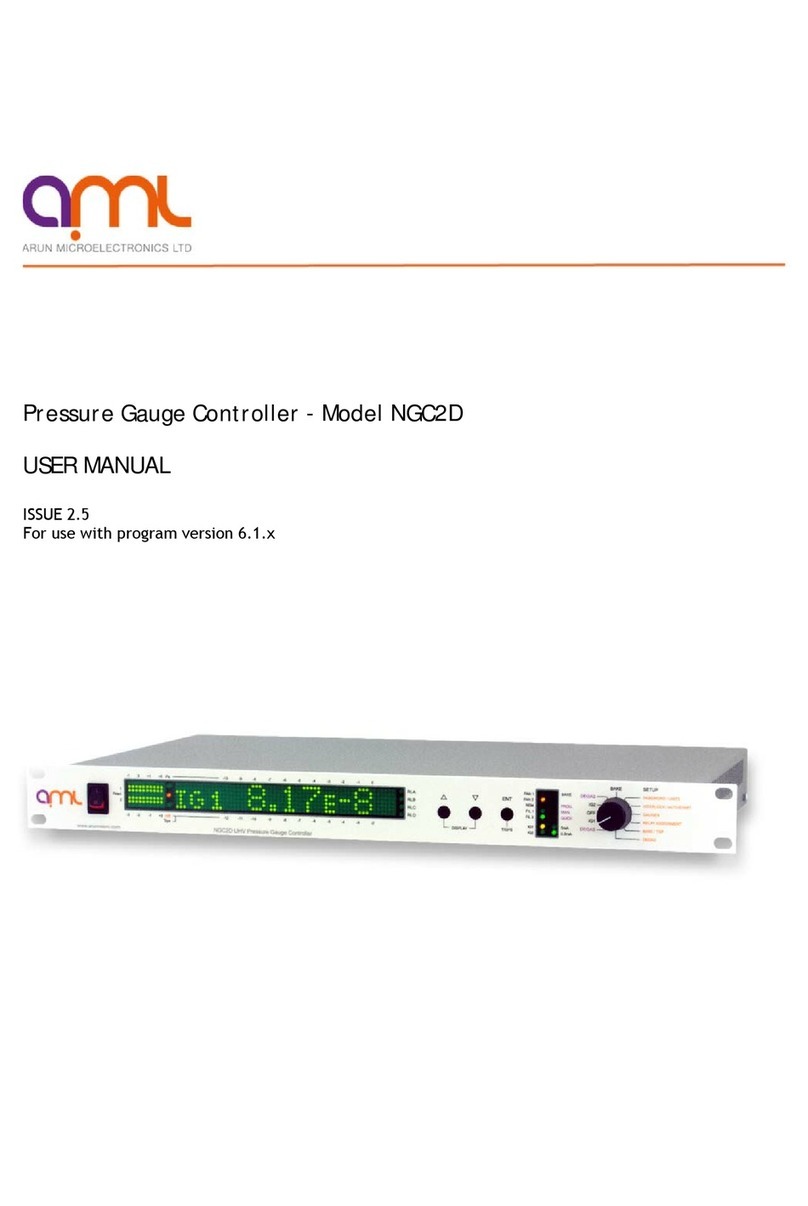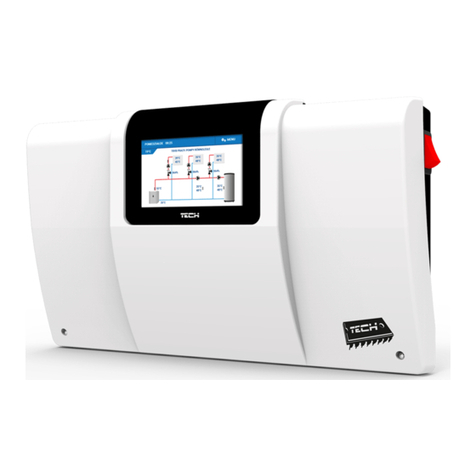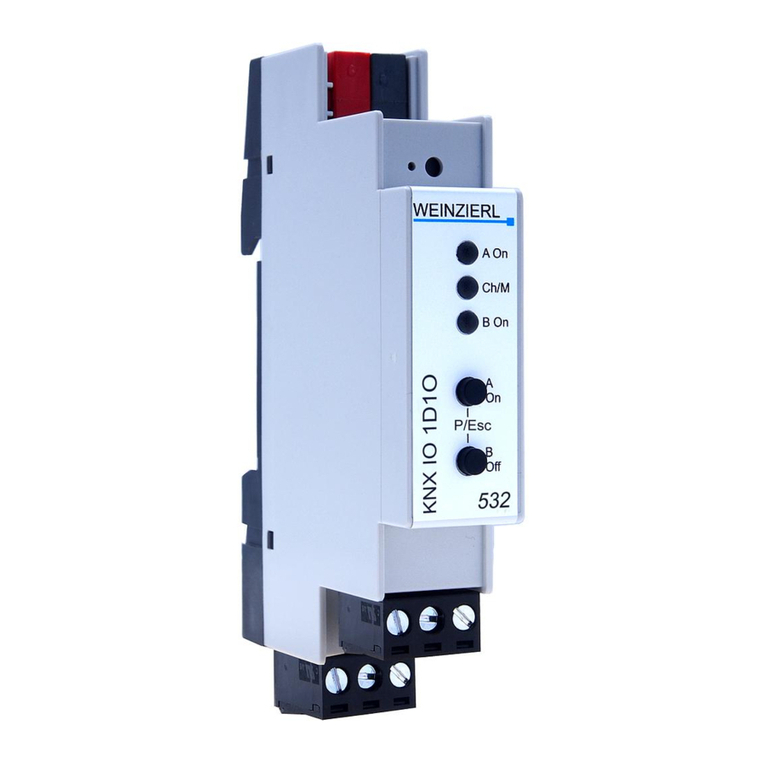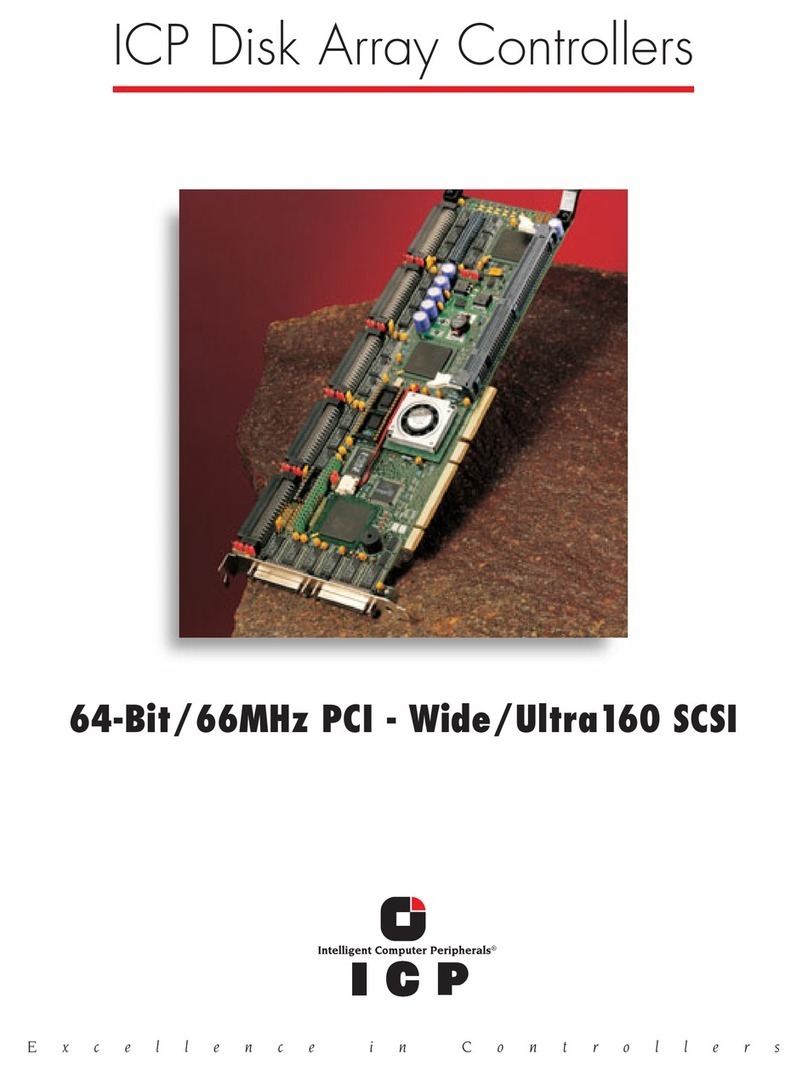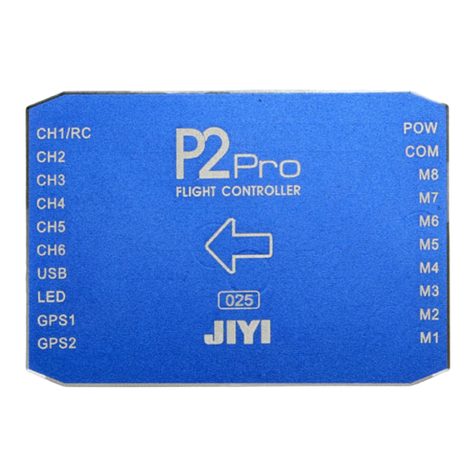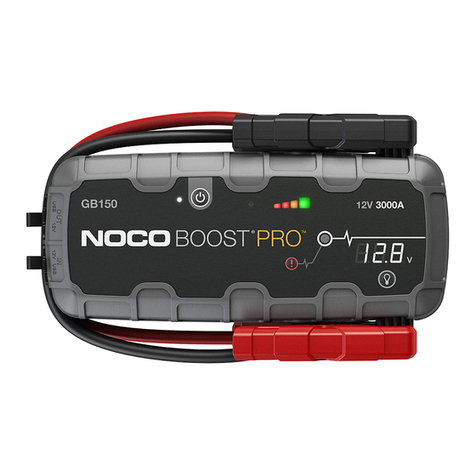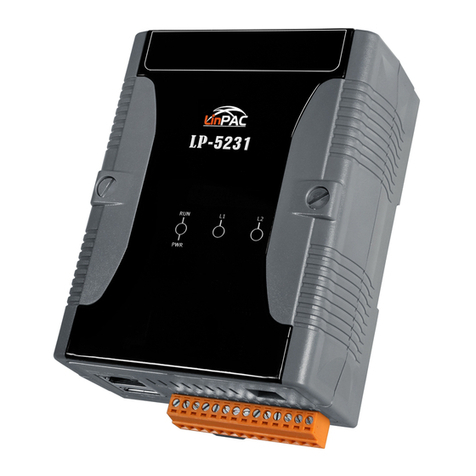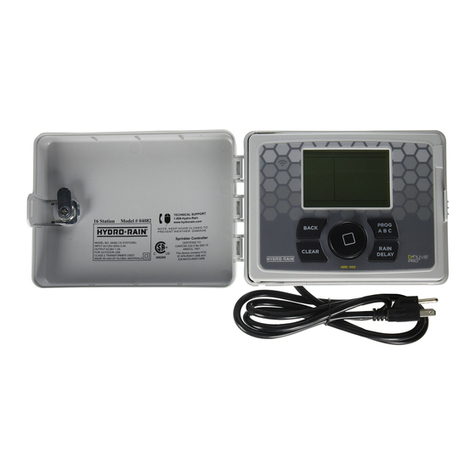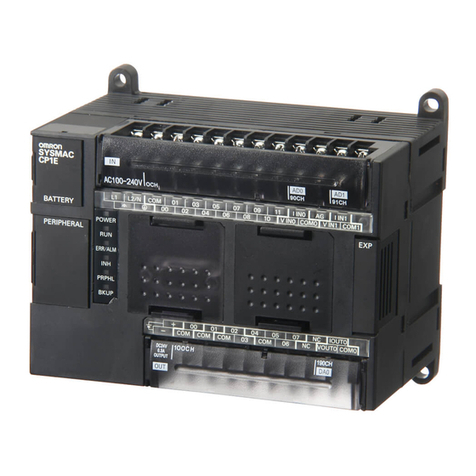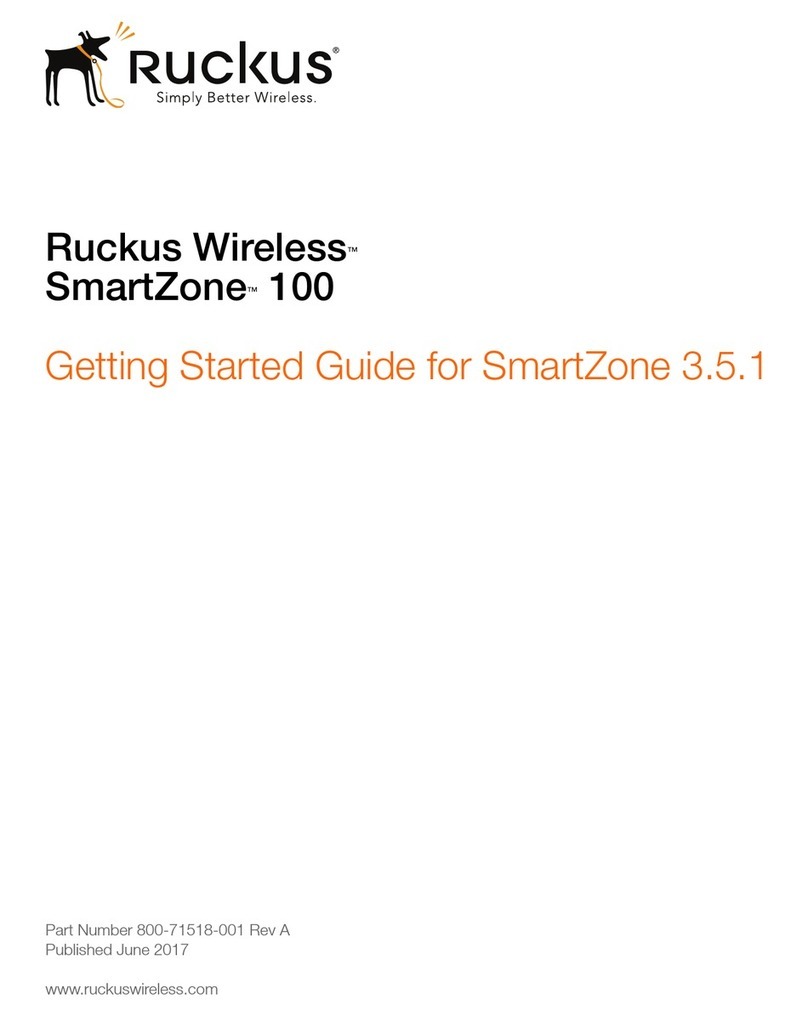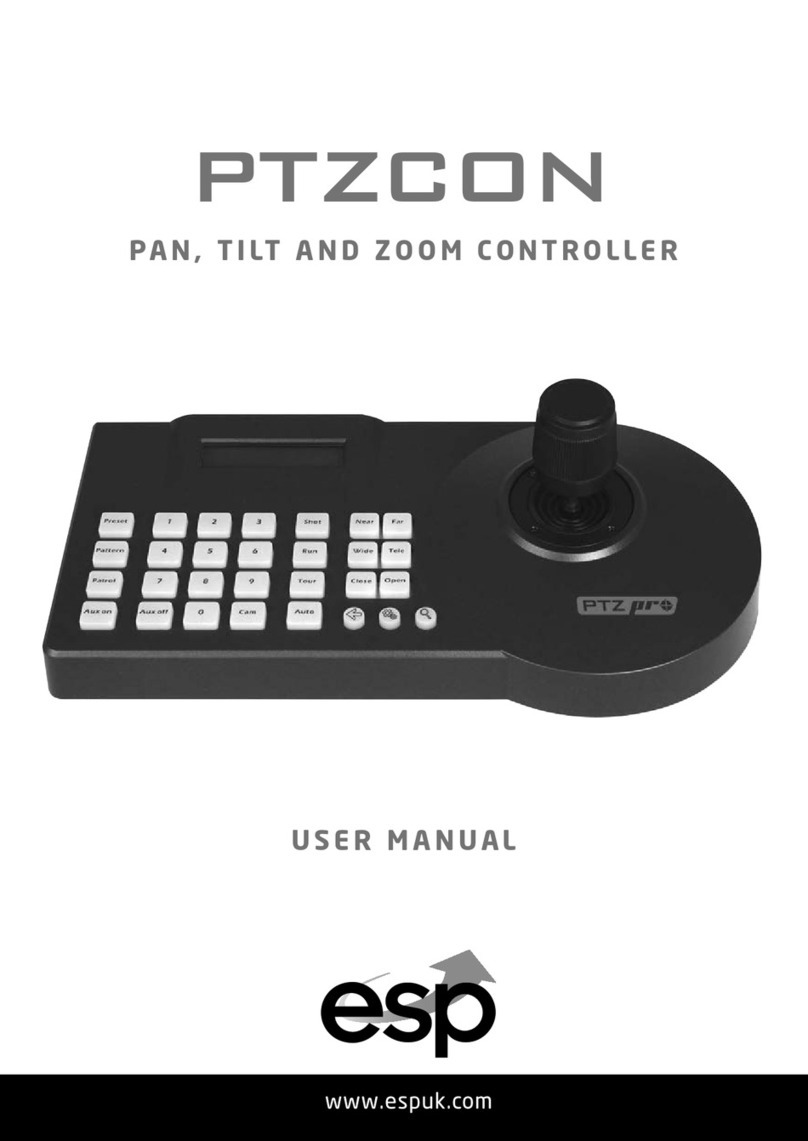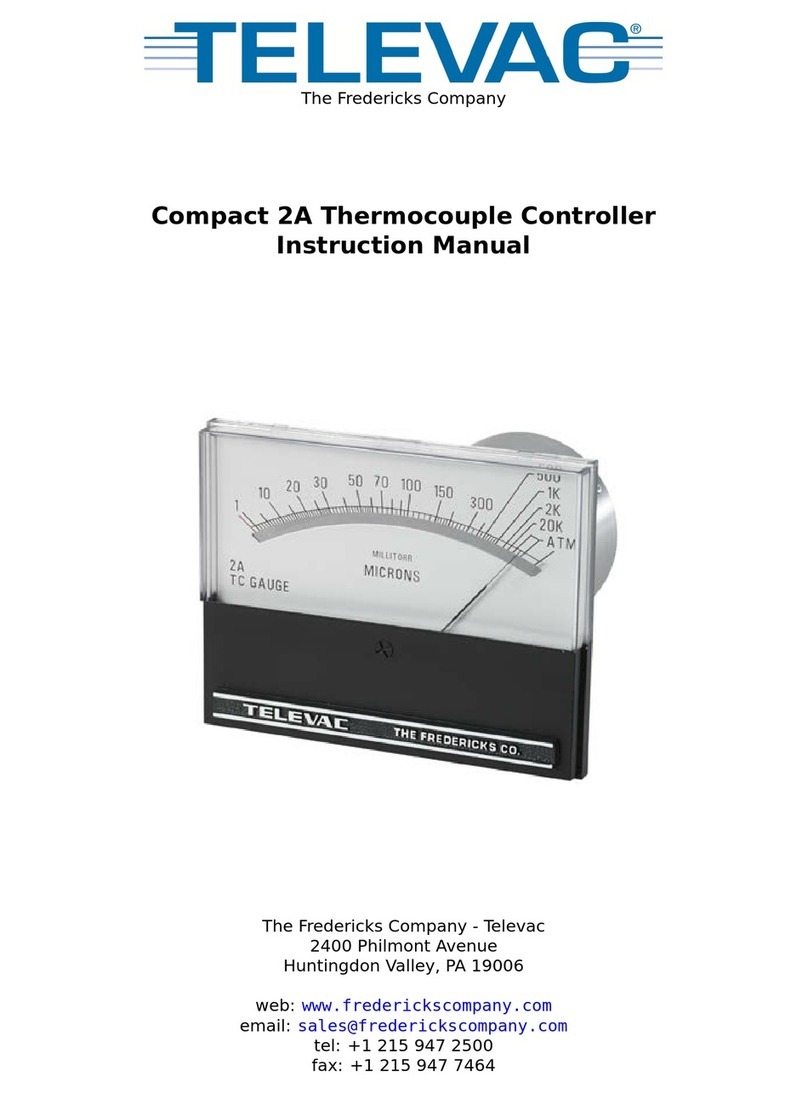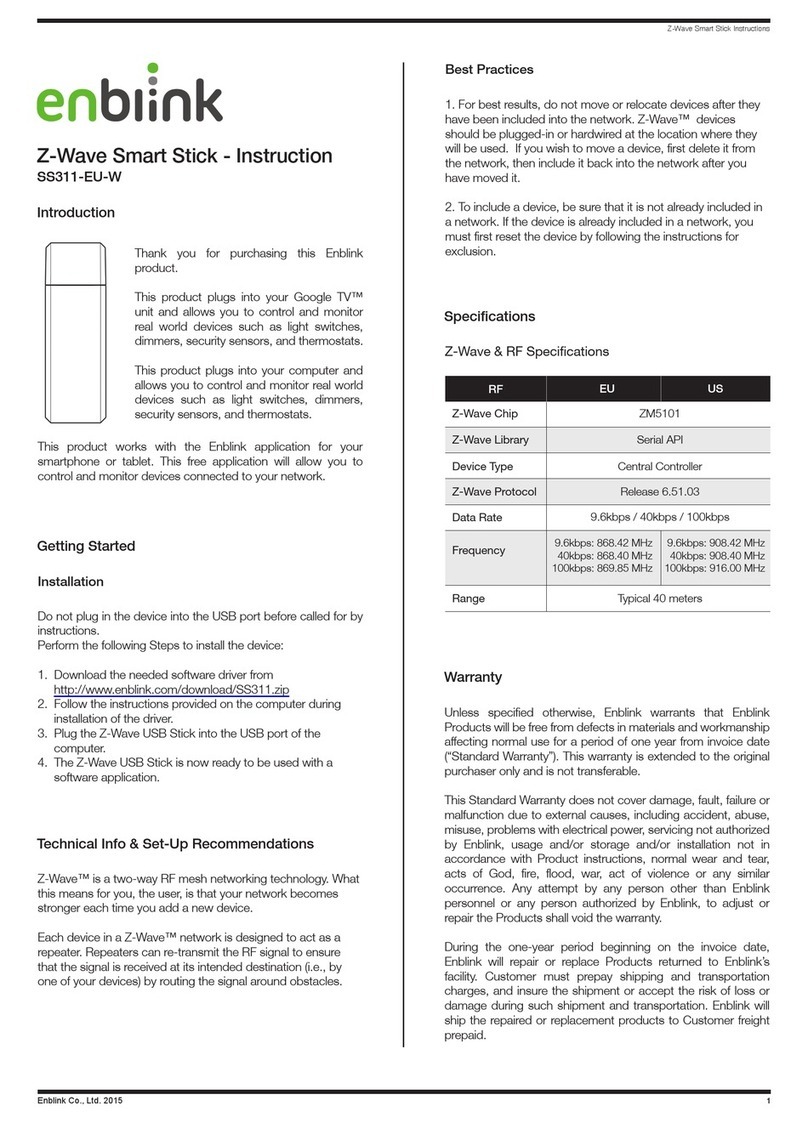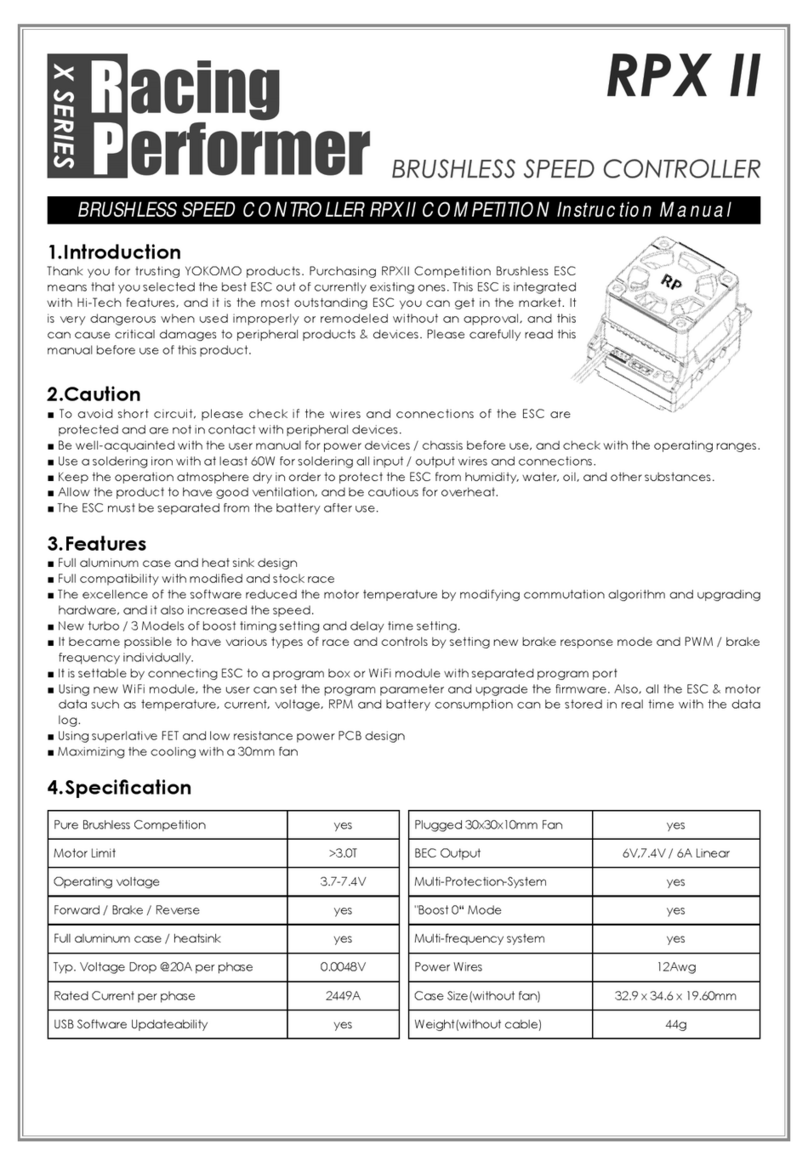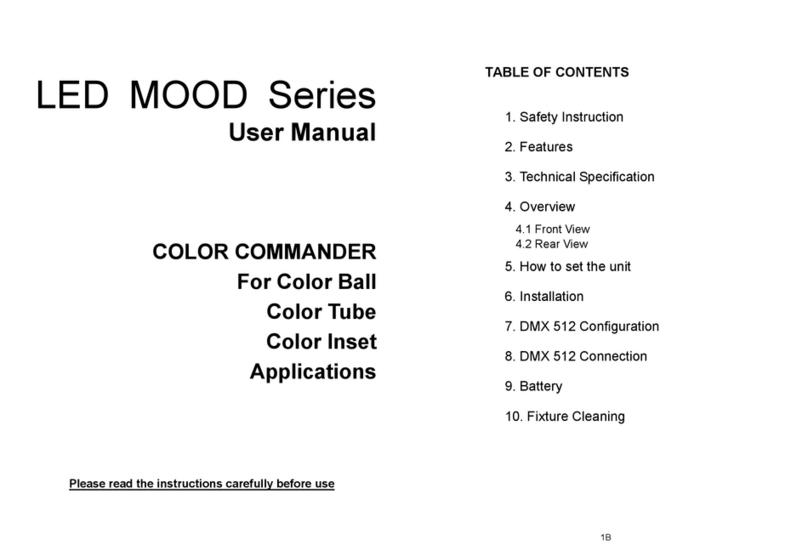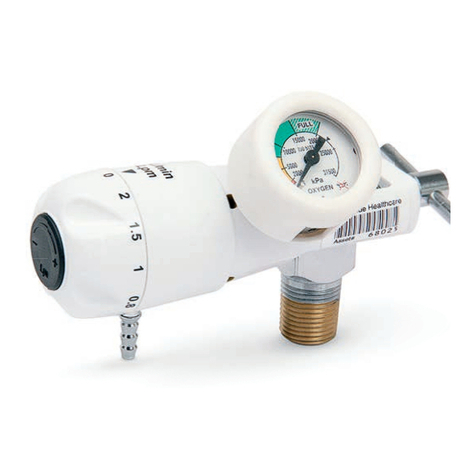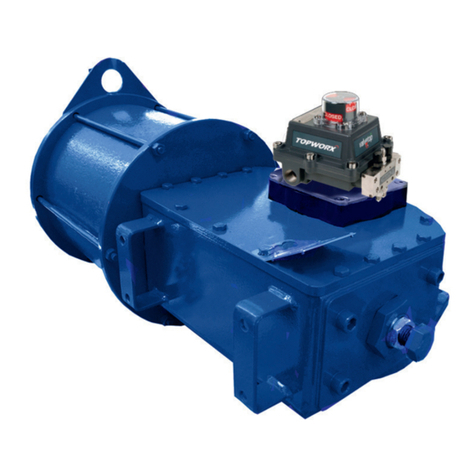Arun Microelectronics LTD PGC4S User manual

ARUN MICROELECTRONICS LTD.
PRESSURE GAUGE CONTROLLER MODELS PGC4S, PGC4D AND PGC4Q.
INTERFACE MANUAL ISSUE 4
For use with Program Version 2.00 onward.
COPYRIGHT RESERVED 1993
The information contained in this manual has been carefully checked and is believed to be correct. No
responsibility is assumed for any errors. User comment and criticism is welcome: please write quoting
the serial number of the instrument and the version number of the software as displayed by the
instrument to:
Customer Services,
Arun Microelectronics Ltd.,
Fitzalan Road,
ARUNDEL,
West Sussex. BN18 9JP.
England.
Please direct other enquiries to the distributor or agent from whom you purchased the instrument.

2
CONTENTS
1. GENERAL DESCRIPTION.
2. HARDWARE.
2:1 PGC4 Line Drivers and receivers.
2:2 Converting from RS232 to RS485/RS422.
2:3 Setting the interface parameters.
2:4 Cable construction and installation.
2:5 Host computer line drivers and receivers.
2:6 Demonstration software.
3. INTERFACE PROTOCOL.
3:1 General Command and Response formats.
3:1.1 Host Computer Commands.
3:1.2 PGC4 response.
3:1.3 Timing of Next Command.
3:2 PGC4 Response time.
3:3 Local/remote control.
3:4 Host Computer Command Format.
3:5 Status reports.
3:5.1 Short status report.
3:5.2 Single Gauge Status Report Format.
3:5.3 Long Status Report Format.
Appendix A. Format for downloading cold-cathode gauge calibration tables.
Appendix B. Example of a host/PGC4 dialogue.
Appendix C. Remote connector.

3
1. GENERAL DESCRIPTION.
Up to 16 PGC4 instruments can be connected to a single serial line. Line conditions are in electrical
accordance with RS232C or RS485, to order. Instruments compatible with RS485 are downwardly
compatible with RS422, since the drivers and receivers are connected to separate balanced lines (i.e. no
transceivers are used). PGC4S, PGC4D and PGC4Q instruments can be mixed on the same line.
Each instrument is identified by a unique address code, selected from the numbers 0 to 15 inclusive and
defined by internal links. The address code is shown momentarily on the main LED display each time
the instrument is switched on. Instruments connected to a single serial line are allowed to send
characters only when addressed by the host computer. Either a short report giving current measured
pressures or a full report of the status of the PGC4 can be requested. Current pressures are reported in
filtered form.
Because the transmission rate is high and the quantity of data low the host computer can poll all
instruments faster than any significant event in the vacuum system. The response time of an instrument
to a host request is generally less than 1 millisecond.
Remote control is established and relinquished via the serial interface. Either an individually addressed
instrument or all instruments may be switched to remote or local control by a single command. The
status of any instrument is unchanged in every other respect after a change in control status.
The host computer can control:
Trip setpoints
Cold cathode high voltage supply switching
Cold cathode gauge calibration parameters
Cold cathode gauge low pass filter time constant
and all commands may be directed to a single gauge or instrument or all instruments.
At switch-on or after a reset due to derangement of the embedded program or an external reset via the
Auxiliary connector an instrument is reset into the local operation mode with the high voltage supplies
switched off.

4
2. HARDWARE.
2:1 PGC4 Line Drivers and receivers.
The type of line drivers and receivers fitted to any particular PGC4D or PGC4Q instrument may be
determined by inspecting the model number inscribed on the rear panel. If this contains the suffix "F"
then the line interface circuits are compatible with RS422/RS485. Otherwise they are RS232 types.
Although the Remote Connectors fitted to the rear panel are the same type for the two interfaces. ALL
INSTRUMENTS AND HOST COMPUTER CONNECTED TOGETHER MUST HAVE THE SAME
TYPES OF LINE DRIVERS AND RECEIVERS. Driving RS485 receivers with RS232 drivers may cause
damage to one or the other.
The type of line drivers selected will depend on the distance between the host computer and the most
remote PGC4, the number of PGC4s sharing the same interface lines and the speed of response
desired. The speed of response will normally be dominated by the transmission times, the latency of the
PGC4 and host program should be small in comparison. Generally speaking, if the maximum distance
is over 15 metres or there are more than six instruments sharing the same interface then RS485 drivers
should be used.
2:2 Converting from RS232 to RS485/RS422.
A conversion kit consisting of:
1 off PGCX RS485 PCB assemblyAML part no KPGCRS485PCB
(marked AML C723 on the underside)
1 off PGC4 remote cable assemblyAML part no KPGC4REM485
1 off M3 "Nyloc" nut
1 off M3 shakeproof washer
1 off M3 x 12 pan head screw
is required. A No.0 or No.1 point "Pozidriv" and a small flat-bladed screwdriver are also required.
Disconnect the power connector and remove the smaller screws at the sides of the instrument. Note
that the ventilation slots are at the right side, when viewed from the front. Remove the cover in an
upward direction. Remove the screws retaining the Remote Connector on the rear panel and locate the
5-way Molex connector at the other end of the remote cable. Disconnect the Molex connector by
inserting a fingernail or screwdriver between the brown latch and clear connector body while pulling the
body upward. Do not pull on the wires. Replace this cable assembly with the one supplied in the kit but
do not insert the Molex connector. Fit the connector using the M3 x 12mm screw at one end. On the
projecting end of this screw inside the case fit the soldertag on the flying lead followed by the shakeproof
washer and "nyloc" nut.
Locate the integrated circuit U24 adjacent to the Molex connector and prise each end up in turn by
inserting the flat-bladed screwdriver between the body of the IC and its socket. Keep the body of the IC
reasonably parallel to the socket: this will ensure that the pins are not bent. When the IC is released

5
avoid touching the pins. Insert the pins of the interface PCB into the U24 socket with the overhanging
part toward the rear of the instrument. Take care to engage all the pins correctly in the socket. The pins
are brittle and will break if bent. Insert the integrated circuit previously removed into the socket on the
interface PCB, aligning the notch with the notch shown on the PCB legend. Insert the free Molex
connector on the new Remote cable assembly onto the Molex pin header on the interface PCB. Do not
connect it to the header on the main PCB.
Before replacing the cover read the next section.
2:3 Setting the interface parameters.
Disconnect the power connector and remove the smaller screws at the sides of the instrument. Note
that the ventilation slots are at the right side, when viewed from the front. Remove the cover in an
upward direction and locate USRLK2 at the centre of the main PCB assembly. Spare links are stored on
LKPARK2 which is adjacent to USRLK2. Links stored there do not affect anything else.
Baud Rate. Fit or remove links at BR0 and BR1 according to the following to specify the baud rate:
2400fit links to BR0 and BR1
4800fit link to BR1 only
9600fit link to BR0 only
19200fit no links
Unique Instrument address. The instrument is binary-coded on links ID1 to ID4 on USRLK2. The
presence of a link denotes a binary "0" and the absence of a link denotes a binary "1". Ensure that all
instruments connected to the same serial interface have different addresses.
Line termination. If the instrument has option "F" fitted it has RS485/RS422 driver and receivers. The
instrument which is furthest from the host computer should have a termination resistor connected across
the "Received Data" lines. This is accomplished by moving the link fitted to the interface PCB from the
"OFF" or "NO" position to the "ON" or "85" position (only one of these alternative legends will be present,
according to the issue of the PCB). Only one PGC4 receiver termination should be fitted per serial
interface, all others should have links in the "OFF" position.
For compliance with RS485 conditions lines should be terminated at both extremities. Termination of the
most remote PGC4 transmitter must be done outside the instrument.
If a PGC4 fitted with a RS485 interface is to be used without being connected to a host computer it is
recommended that a termination be fitted in order to decrease its sensitivity to radiated noise.
2:4 Cable construction and installation.
Twisted-pair cables are recommended for both RS232 and RS422/RS485 lines. Pairs of 7 x 0.2mm
(0.22mm2) PVC equipment wire twisted about 1 revolution per 1 to 1½ cm are suitable. This results in a
characteristic impedance of around 100 ohms and is a reasonable match to the RS422/RS485
terminations. An overall screen is recommended and should be connected to the signal ground pin on
the connectors. There is a 100 ohm, 1 watt resistor included in series with this connection in order to
limit circulating currents due to ground line differences. In order to eliminate ground currents completely
you may, for example, connect the incoming screen and leave the outgoing screen disconnected at

6
each connector on the daisy-chain. The allowable common mode differences in the RS485 specification
is 7 volts, and the PGC4 complies with this. Connector pin numbers are defined in Appendix C. Each
used pin should be connected to all similarly-numbered pins at every PGC4 and host computer
connector on the interface. The wiring should be daisy-chained from the host computer to each
instrument in turn; no branches or spurs should be allowed. The most remote PGC4 should have a
termination connected, as described in section 2:3, above.
2:5 Host computer line drivers and receivers.
It is advisable to check certain conditions in the host computer line drivers and receivers, even if these
are guaranteed to comply with the relevant standards.
If facilities exist for terminating lines at the receiver this should be done. For compliance with RS485 the
line driver should also be terminated.
Consideration should be given to the receiver output state when the all the PGC4s are silent and their
lines are in the "TRI-STATE" condition.
For RS422/RS485 the commonly used DS75176, SN75176 and similar transceivers do not guarantee
that the output state of a receiver is defined when the inputs are terminated, but undriven, because of
the ±200 millivolt offset of the receiver. The claim on the data sheet that "The receiver incorporates a
fail-safe feature which guarantees a high output state when the inputs are left open" refers to a condition
without termination. Connection of a termination, external cables or a driver with its outputs in the "TRI-
STATE" condition will give unpredictable results and result in transmission errors. Normally, a 1 kilohm
pullup resistor connected between the RXD+ line and the receiver +5 volt supply and a 1 kilohm
pulldown from RXD- to the 0 volt supply line will ensure a high output state under properly terminated
conditions.
For RS232 receivers an open-circuit input normally ensures a high output state. If this is not the case
then adding a 10 kilohm pulldown resistor between the received data line and the receiver negative
supply voltage will correct this.
Because the number of PGC4 instruments driving an interface may be between 1 and 16 it is not
possible to fit these additional components on the drivers in the PGC4.
2:6 Demonstration software.
Two demonstration programs are available for IBM PC XT, AT or compatible computers. The computer
requires DOS 3.0 or higher, a colour display and a free serial port. The baud rate (2400, 4800, 9600 or
19200 baud) and serial port (COM1: or COM2:) are selectable.
PGC4DEMO.EXE:
This program is used to control a single PGC4 instrument (although other instruments may be
connected to the party line). The PC displays the pressures of all active gauges and the status of relays,
and can assume control of the instrument in order to switch gauges, change setpoints, display
messages, etc. The instrument type, ROM version/date and internal settings can be displayed.
PGCMULTI.EXE:
This program logs the status of up to 16 instruments on a party line. Pressures, relay status and errors
are displayed, and the internal settings can be shown. To physically identify an instrument, it can be
instructed to display its ID. The program does not control individual gauges but has the ability to start or
stop all gauges in all instruments.

7
3. INTERFACE PROTOCOL.
Up to sixteen instruments can be connected to a single RS232 or RS422/RS485 party line. Instruments
of different types can be connected on the same line, but all instruments must have their internal links
set to
(a) the same baud rate
(b) a unique instrument address
Each instrument maintains its transmit line in a high-impedance state except when transmitting data in
response to a request from the host computer. Each instrument has a unique address, set internally by
links.
3:1 General Command and Response formats.
3:1.1 Host Computer Commands.
The host computer sends commands to instruments in the following format:
First byte: '*' (ASCII 47)
Second byte:Command character. All commands are represented by a single character.
Third byte:Instrument address. Instruments are identified by a single character from '0' - '9' and 'A' to 'F',
corresponding to addresses 0 - 15. Some commands can be addressed to all
connected instruments by 'X'.
Optional ASCII
parameters
Additional command parameters may be single ASCII characters, or character
strings (a series of ASCII characters followed by a delimiting character (any of
ASCII 0, 13, or ',').

8
3:1.2 PGC4 response.
If the command was addressed to all instruments there is no response. Otherwise, the instrument
addressed responds with a status byte and an error byte (see next page) followed by a CR-LF (ASCII
13, 10). If a status report was requested the status and error bytes are followed by the report, a
checksum and then the CR-LF.
Instrument status byte coding:
Status byte: Bits 3-0 : Instrument type
00012- PGC4S
00102- PGC4D
00112-PGC4Q
01102- PGC6
01112- RESERVED
Bit 4 : 0 = local mode, 1 = remote mode
Bit 5 : 1
Bit 6 : 0
Bit 7 : 0
Error byte: Bit 0 : gauge - specific error
Bit 1 : instrument battery low
Bit 2 : internal settings were lost and restored to factory default
Bit 3 : command referenced a non-existent gauge or relay
Bit 4 : parameter was out of range
Bit 5 : command not accepted (where none of the above are applicable)
Bit 6 : always set to 1
Any bits set in the error byte are maintained until reset by a <reset error> command.
3:1.3 Timing of Next Command.
The host computer must not begin transmitting a new command until a CR-LF has been received,
signalling the end of transmission, or two instruments may conflict on the serial line.
3:2 PGC4 Response time.
For the commands <poll>, <control>, <release>, <long>, <short> and <reset error>, which do not require
any extra parameters, the instrument addressed will begin transmitting a response within about 200 μs.
The response to other commands is sent as quickly as possible (typically 1 - 5 ms) but a minimum
response time cannot be specified. The transmission time taken for a report to be sent is determined by
the system baud rate.
3:3 Local/remote control.
An instrument starts operation in local control, i.e. using the front panel. In local mode the instrument
responds only to commands without parameters (<poll>, <control>, <long>, <short> and <reset error>).
The <control> command puts the instrument into remote mode, and all the other commands can then be
used. The front panel can still be used to change the display but not to start gauges or change setpoints.

9
3:4 Host Computer Command Format.
Gauges within the instrument are addressed by a numeric character, found from the status report. For
example, in a PGC4D instrument the two cold-cathode gauges are numbered '1' and '2', the two pirani
gauges '3' and '4' and the capacitance manometer gauge, if fitted, by '5'. 'X' may be used where
applicable to address all gauges within the instrument.
Relays are addressed by uppercase letters starting with 'A'. A PGC4Q instrument contains relays 'A' to
'L'. Again, 'X' may be used where applicable.
Command parameters may be single printable ASCII characters or ASCII strings (terminated by a
delimiter). Numbers in scientific notation must be sent as ASCII strings of the form "9.9E±99,"; other
ASCII strings can be of any length, including zero.
Bits 3-6 of the error byte should be checked after sending a command to ensure that the command has
been understood and carried out. Bit 0 may be set if a gauge-related command cannot be carried out,
e.g. pirani interlock, external inhibit.
In the following tables, the different parameter types are called 'Char' (single character, no terminator),
'Value' (ASCII string with terminator) and 'SN Value' (ASCII string with terminator in scientific notation
form).
Command Char Parameters Description
<short> S Instr Request a short status report from an instrument reporting
operating status of all gauges
<gauge> G Instr Gauge Request status and pressure of a single gauge.
<long> L Instr Request a long status report from an instrument.
<Gauge on> N Instr1Gauge2Switch on gauge(s).
<Gauge off> F Instr1Gauge2Switch off gauge(s).
<setpoint> K Instr Relay
SN Value
Change a relay setpoint pressure.
<override> O Instr1Relay2Permanently energise relay. Command <setpoint> restores
normal operation.
<inhibit> I Instr1Relay2Permanently de-energise relay. Command <setpoint> restores
normal operation.
<filter> f Instr1Gauge2
Char
Set low-pass filter time constant for a gauge. Permitted values
are '0', '1', '2', '4' and '8' seconds.
<over-pr> p Instr1Gauge2
SN Value
Set the maximum pressure for a cold-cathode or BA gauge.
Units are mbar.
<calibrate> Z Instr1Gauge2
Char
Select cold-cathode gauge calibration method.
'0' :gauge type determined by internal links
'1' :calibration table follows: See appendix A for details of
calibration.
1
these instrument addresses may be global, i.e. 'X'. 2
these gauge addresses may be global.

10
Name Char Parameters Description
<gas factor> g Instr1Gauge2
SN Value
Set pirani gauge gas factor, range 1.0E+00 to 9.9E+00
<bakeout> B Instr
Start bakeout using gauge 1 and current bakeout
overpressure, temperature and time. Can be cancelled
before end of the cycle by the <gauge off> command.
(PGC6 only).
<bake temp> T Instr1Value Set bakeout temperature setpoint (°C). (PGC6 only)
<bake time> t Instr1Value Set bakeout cycle time (minutes). (PGC6 only)
<bake ovp> b Instr1SN Value Set bakeout overpressure setpoint. (PGC6 only)
<reset error> E Instr1Reset an instrument's error flags.
<display> D Instr1Value Put a message on instrument's LED display. An empty
string restores the default display, as does turning the front
panel switch.
<sound> n Instr1"divisor"
"time"
Make a sound for "time" msec by dividing a 920 KHz clock
by "divisor". "divisor" can range from 40 to 10000, and
"time" from 5 to 32000.
1these instrument addresses may be global, i.e. 'X'.
2these gauge addresses may be global.
Examples:
*C2 control instrument 2
*CX control all instruments
*S0 get a short status report from instrument 0
*N0X turn on all gauges in instrument 0
*F11 turn off gauge 1, instrument 1
*KBE2.0E-10, setpoint relay E, instrument 11 2.0e-10 mbar
*n8920,1000, instrument 8 sounds a 1 Khz tone for 1 second
*D0CHECK CABLE 1, flash "CHECK" and "CABLE 1" on instrument 0

11
3:5 Status reports.
There are three types of status report. The short status report gives the operating status and pressure of
each gauge in the instrument. The single gauge report does the same for a specified gauge. The long
status report lists the configuration of each gauge, each relay and the instrument. The information given
by the long status report only needs to be read once after taking control of an instrument; its information
may change during operation, but only predictably in response to host computer commands. The short
or single gauge reports can be requested as often as required.
Pressures.
The pressure measurement for each gauge in the instrument is updated 4 times a second. Pirani and
capacitance manometer gauge pressures are displayed and reported without filtering. Ion gauge
pressures can be filtered with a time constant of 1, 2, 4 or 8 seconds, but filtering can be turned off if
desired. The pressure field for a non-operating gauge is filled with spaces.
Status report formats.
All status reports begin with the status and error characters described on Page 2, and terminate with a
checksum and CR-LF combination. The checksum is formed by adding all the preceding bytes, starting
with the status byte, taking the two's complement of the least significant 8 bits. It is sent in hexadecimal
as two characters, the most significant 4 bits first.
Status reports can be read in two ways:
(a) because the CR-LF terminator can only occur at the end of a report the report can be read into a
buffer until the terminator is seen. The report is then decoded into gauge, relay or system records. This
is the best approach on slower machines (such as IBM PCs).
(b) alternatively, the report can be read intelligently and decoded record by record. As each record has a
header character ('G', 'R' or 'S'), and the records are of fixed length, the first character of the checksum
signals the end of the report.
The overall length of a short or long status report depends on the instrument type and the number of
gauges and relays installed in the instrument.
3:5.1 Short status report.
Status byte.
Error byte.
Two relay status bytes:
Each relay status byte is of the form 01XXXXXX2, where the least significant 6 bits indicate the state of
each relay (1 = energised). The first relay status byte indicates the status of relays 'A' to 'F', with
relay 'A' indicated by the least significant bit. The second relay byte indicates relays 'G' to 'L'
where applicable. Any bits corresponding to non-existent relays are set to zero. The status of a
relay assigned to a gauge which is switched off is determined by the positioning of an internal
link; this setting is given in the long status report (see below).

12
Then, for each gauge in the instrument, a gauge record:
Byte Name Details
1 Header byte 'G'
2 Gauge type 'C' : cold-cathode
'I' : Bayard-Alpert
'P' : Pirani
'M' : capacitance manometer
'T' : trigger Penning
3 Gauge number '1' ...
4 Gauge status Bit 6: always set to 1
Bit 5: gauge externally inhibited
Bit 3: gauge in degas
Bit 2: gauge controlling bakeout
Bit 1: gauge starting
Bit 0: gauge operating
5 Gauge error Cold-Cathode Gauge error:
Bit 0 : low pressure
Bit 1 : gauge is disconnected
Bit 2 : pirani interlock prevents starting
Bit 3 :maximum pressure exceeded
Bit 6 : 1
Bit 7 : 0
Bayard-Alpert Gauge error:
Bit 0 : gauge filament open-circuit
Bit 1 : gauge overemission
Bit 2 : gauge underemission
Bit 3 : maximum pressure exceeded
Bit 4 : pirani interlock prevents starting
Bit 6 : 1
Bit 7 : 0
Pirani Gauge error:
Bit 0 : Pirani gauge open-circuit
Bit 6 : 1
Bit 7 : 0
6-13 Pressure Comma delimited string in scientific notation, e.g. "1.3E-07,". If
the gauge is not operating the string consists of spaces only, i.e.
" ,"
Two-byte checksum.
CR, LF

13
3:5.2 Single Gauge Status Report Format.
A single gauge status report consists of the 4 status, error and relay status characters followed by one
gauge record as per the short status report, a checksum and a CR-LF.
3:5.3 Long Status Report Format.
Status byte.
Error byte.
For each gauge, a gauge configuration record:
Byte Name Details
1 Header byte 'G'
2 Gauge type 'C' : cold-cathode
'B' : Bayard-Alpert
'P' : Pirani
'M' : capacitance manometer
'T' : trigger Penning
3 Gauge number '1' ...
4 LP filter TC '0','1','2','4' or '8' (seconds)
5-8 Unused
9 Calibration '0' : AML
'1' : Balzers
'2' : ESRF
'3' : To be defined
'9' : downloaded calibration curve
10-17 Maximum pressure (mbar)
(cold-cathode and BA
gauges) OR
Gas factor (Pirani gauges)
"N.Ne-NN,"
For each relay, a relay configuration record:
Byte Name Details
1 Header byte 'R'
2 Relay letter 'A' - 'L'
3 Status '0' : associated with gauge
'1' : inhibited (de-energised)
'2' : over-ride (energised)
4-11 Setpoint Pressure in scientific notation "N.NE±NN,"
12 Associated gauge '1' ...

14
System configuration record:
Byte Name Details
1 Header byte 'S'
2 Pirani 1 interlock '0' : disabled
'1' : enabled
3 Relay configuration '0' :relay de-energised when gauge is off
'1' : relay is energised
4 Instrument default cold-
cathode gauge type
'0' : AML
'1' : Balzers
'2' : ESRF
'3' : To be defined
5-9 ROM version 4-character ASCII string, e.g. "1.03,"
10-18 ROM date 8-character ASCII string, i.e. "DD/MM/YY,"
19-40 Additional system parameters may be defined in future
Two-byte checksum.
CR, LF
Appendix A. Format for downloading cold-cathode gauge calibration tables
A calibration table consists of from 2 to 32 pairs of current - pressure coordinates which define points on
the gauge calibration curve, with the current values in descending order. Between these points the slope
is assumed to be linear. The format is as follows:
Highest current (A) "9.9E-99,"
Highest pressure (mbar) "9.9E-99,"
.
.
Lowest current "9.9E-99,"
Lowest pressure "9.9E-99,"
Checksum : 2 ASCII digits representing the 2's complement in hexadecimal of an 8-bit sum of all
characters in the downloaded table (the command characters "*ZNNN" are not
included in the checksum).
CR, LF
A parameter error flag will be set if any of the following are true:
Number of values read is odd.
Number of pairs < 2 or > 32.
Any value does not conform to scientific notation format.
Any current value higher than its predecessor.
The value of the final current/pressure pair determine the lowest valid pressure. At currents below this
value, the measured pressure remains at the final value and a low-pressure error is sent in the gauge
status record.

15
Appendix B. Example of a host/PGC4 dialogue.
Source ASCII Hex Description
Host *P5 2A 50 35 Host polls instrument 5
Instr 5 #@ 23 40 PGC4Q under local control
Host *P1 2A 50 31 Host polls instrument 1
Instr 1 1A 31 41 PGC4 under host control, Gauge-specific error occurred
Host *S1 2A 53 31 Host requests short report
Instr 1 1A
m@
GC1
A
B
2.7E-03,
GP2
A@
7.5E-03,
GP3
A@
1.0E+03,
8D
__
31 41
6D 40
47 43 31
41
41
32 2E 37 45
2D 30 33 2C
47 50 32
41 40
37 2E 35 45
2D 30 33 2C
47 50 33
41 40
31 2E 30 45
2B 30 33 2C
38 44
0D 0A
Status and error bytes
Relays A,C,D energised
Gauge : Cold-cathode gauge 1
HV on
Error = low pressure
Pressure
Gauge record : Pirani Gauge 1
running
Gauge record : Pirani Gauge 2
running
at atmosphere
Checksum
End of report
Host *E1 2A 45 31 Host acknowledges and clears Instr 1 error flag
Instr 1 1@ 31 40 Instrument clears its error byte and indicates readiness
to accept a new command
Host *F1 2A 46 31 Host removes HV supply from Cold-cathode gauge
Instr 1 1@ 31 40 Instrument 1 status byte. No error
Host *d1Check
HV,
2A 64 31 43
68 65 63 6B
20 48 56 2C
Flash "Check" "HV" on instrument 1 LED
Instr 1 1@ 31 40 Instrument 1 status byte
No command or gauge error

16
Appendix C. Remote connector.
This is a 9 way "D" type male connector. Used pin connections and signal names for RS232 are:
3 Received Data
2 Transmitted data
5 Signal ground
If option F is present (as indicated by the suffix F in the model number on the rear panel) then the pin
connections and signal names are compatible with RS422 or RS485 as follow:
6Received data +
7Received data -
8Transmitted data +
9Transmitted data -
5Signal ground
1Protective ground
END.
This manual suits for next models
2
Table of contents
Other Arun Microelectronics LTD Controllers manuals
